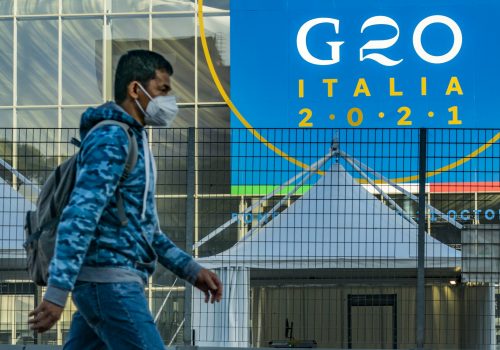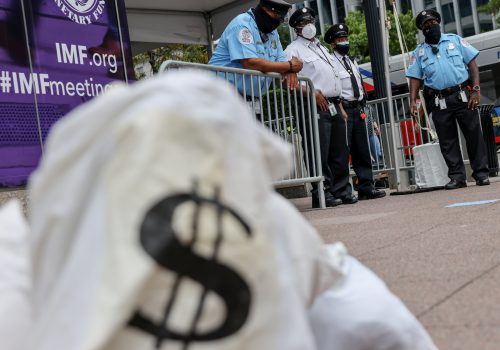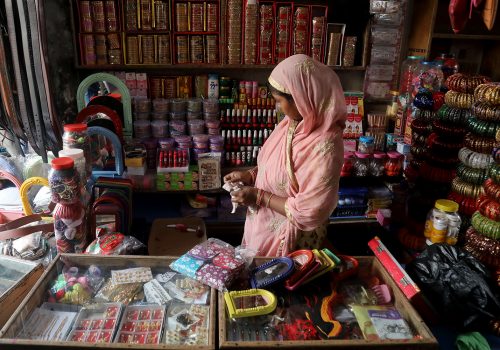G20 risks becoming G7 + G13
The onset of the pandemic severely disrupted economic activity globally and, in most countries, led to the sharpest GDP-contractions since the Great Depression. At the national level, the governmental response has generally been forceful, with fiscal spending reaching historic levels. However, at the international level and particularly through the G20, the global policy response has been relatively uncoordinated and lackluster, deepening the chasm between the G7 economies and the rest of the group — the G13.
Established in the wake of the 1997 Asian financial crisis as a relatively low-profile conference of finance ministers, the G20 quickly rose to a high-profile convening of powerful heads of government in the aftermath of 2008 Global Financial Crisis. Institutionalized at the 2009 Pittsburgh Summit as the principal forum for coordinating international economic and financial cooperation, the G20 was instrumental in shaping the international response to the Global Financial Crisis.
Its response to COVID, however, was strikingly different. Despite an initial commitment to “do whatever it takes” to support the global economy, few distinct commitments have emerged from the G20. Endorsed in April 2020, measures stipulated in the G20 Action Plan included a collection of uncoordinated national monetary and fiscal policies that member nations had already determined to undertake at the national level. Even while fiscal coordination was lacking, the G20 has also fallen short in banding together on vaccine rollouts, debt relief, and strengthening supply chains.
Hover over a country to compare its fiscal spending
Now, with the rotating Presidency held by Italy, this year’s Summit priorities of people, planet, and prosperity with the latter focusing on digitization seem to reflect the concerns of the G7 and not the G13. The G20 Summit seems to have forgotten another P — pandemic — that most of the world is still dealing with.
Splitting up into G7 and G13
G7 economies have far outperformed the rest of the G20 countries, with the exception of Australia, in terms of fiscal spending. A major divergence has emerged between the two groups in absolute terms as well as per capita terms. Collectively, the seven countries that comprise the G7 have spent more than five times the sum of the remaining thirteen countries. This divergence in fiscal spending is owed primarily to the relatively limited fiscal policy room in emerging markets, which has been constrained further by the tightening of financing conditions following the economic shock of COVID-19.
What does this mean for the G20?
The G20 was founded to bring together the most important industrialized and developing economies to discuss international economic and financial stability, in part to amplify the voice of large emerging markets at the international table. Although the forum has no decision-making powers, it can transform political consensus into action as its member states account for 80% of the global economy, 75% of global trade, and 60% of the global population. G20 nations further dominate the boards of international financial institutions and transnational regulatory bodies allowing the group to implement its agreements. The grouping has ample history of doing just that — in response to the Global Financial Crisis, the G20 leveraged international norms in addition to its member states’ influence at the International Monetary Fund and Financial Stability Board to implement and monitor compliance with a range of reforms in the global finance sector.
But it seems that memory of the coordinated response has faded; the G20 is falling remarkably short of its promise and its own commitment to support the global economy through the pandemic. So far, the G20 has only agreed to a one year debt suspension through the Debt Service Suspension Initiative (DSSI), that is set to expire at the end of this year with limited expectations for bold new initiatives at the G20 Summit in Rome. The DSSI itself does not cover borrowing from multilateral official creditors like the World Bank or from private creditors, dissuading nearly half the 73 eligible countries, concerned about the impact it will have on their market access, from utilizing it.
While the G13 are mostly still stuck in the acute phase of global fiscal response — supporting private incomes, preserving employment, and shoring up health systems, the G7 countries have now graduated to the recovery phase — with a pivot toward investment in public infrastructure and ‘green’ investment. The G7 and the G13 countries are experiencing divergent economic realities, and as Finance Ministers and Heads of State from around the world convene in Rome, this gap will be difficult to overlook.
In a world where the G20 rose to the challenges of the pandemic, it would have coordinated policy action to ensure a smooth transition in the movement of goods, capital, and people. With the rotating Presidency along with the agenda-setting power that accompanies it moving to Indonesia next year and to India in 2023, there is hope of a reorientation of priorities and a resurgence of broad international economic coordination. But the ship may have sailed by then, the G20 risks factionalizing into the G7 + G13.
Mrugank Bhusari is a Program Assistant with the Atlantic Council’s GeoEconomics Center. Follow him on Twitter: @BhusariMrugank
Niels Graham is a Program Assistant with the Atlantic Council’s GeoEconomics Center. Follow him on Twitter: @GrahamNiels
Related reading

At the intersection of economics, finance, and foreign policy, the GeoEconomics Center is a translation hub with the goal of helping shape a better global economic future.


